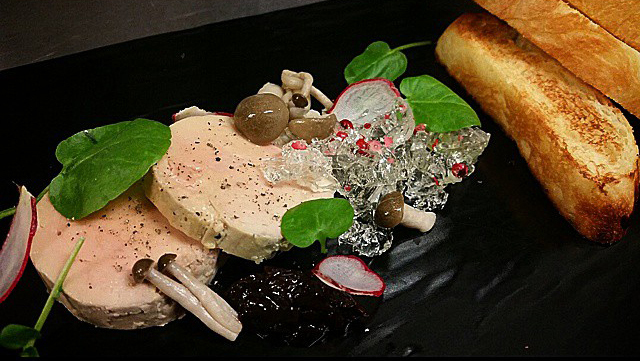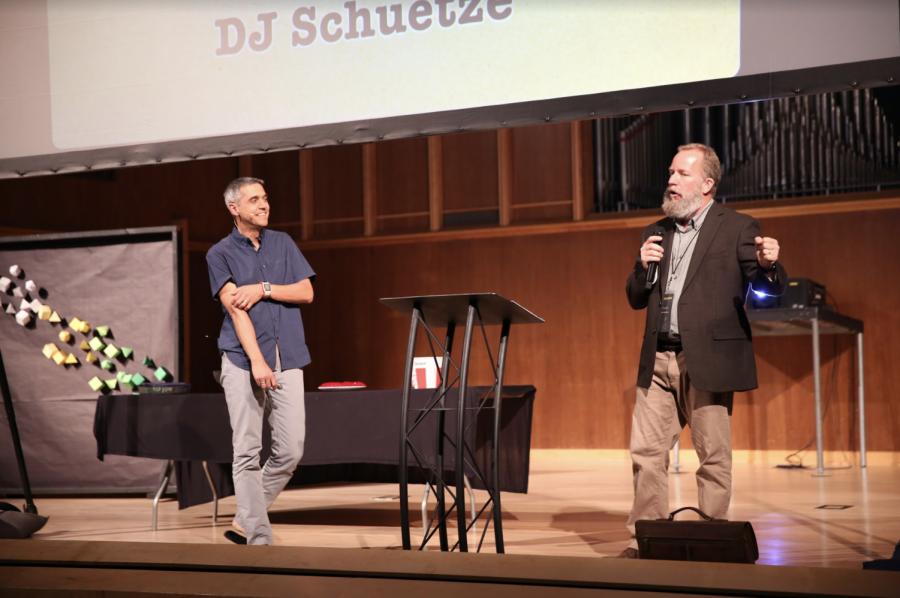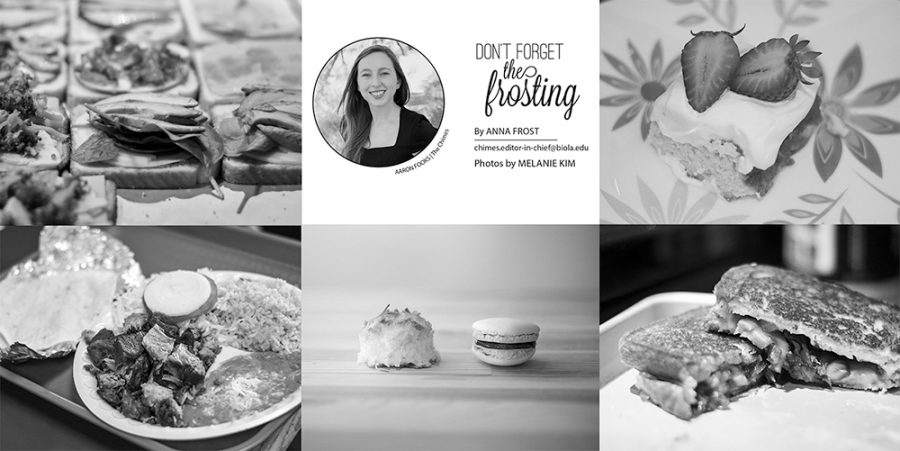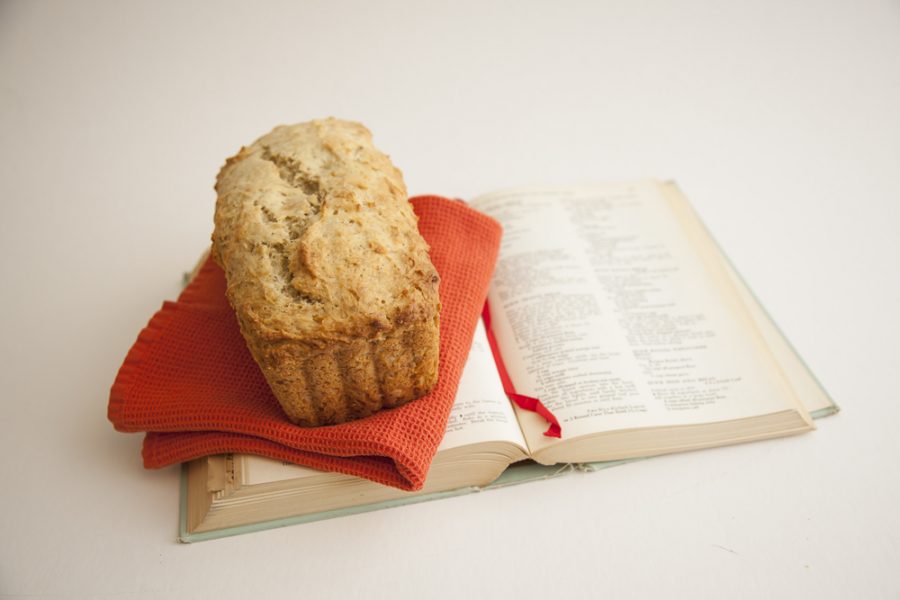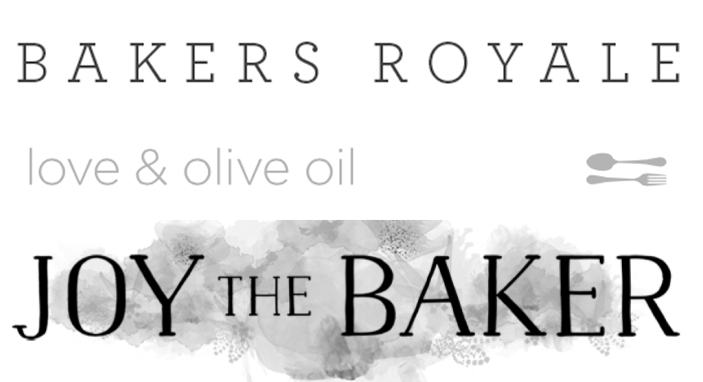California gave me a very unpleasant welcome back present when I graduated from my New York-based culinary school in July 2012 and returned to my home state. Mere days before my arrival a ban on foie gras went into effect, upsetting chefs and diners alike by taking away a cherished delicacy. However shortly after 2015 began, a federal judge ended the injustice by deeming the ban unconstitutional. The two and half years that foie gras-loving Californians spent with nary a bite of foie were highly unnecessary and unreasonable. May we never let this mistake repeat itself.
INTRODUCING FOIE GRAS
For those unfamiliar with French words and gourmet food, “foie gras” simply means “fattened liver,” usually of a duck or a goose. Now before we continue, abolish all preconceptions of liver as a food. This is not your grandma’s chopped liver and onions from the 1950’s of your parents’ dinnertime horror stories.
Foie gras, aptly named because of its high fat content, is creamy, unctuous and delicious. It can be seared, roasted or prepared as a pate. Its flavor is unique — rich but with a sharp tanginess to it — and pairs well with sweet and earthy flavors, such as fruit or mushrooms. I have enjoyed it many ways. Most memorably, Chef Patrick Pontasy of Bellamy’s in San Diego skewered a foie pate and surrounded it with cotton candy as a playful amuse bouche when I dined at one of his previous restaurants.
CONTROVERSIAL CONSUMPTION
Though foie gras has been produced for thousands of years, its origins have been traced back to the ancient Egyptians and Romans. In modern times the production and consumption of foie gras has become controversial. Animal rights groups pick it out of the meat-eating line up as a pet evil and have convinced many otherwise avid omnivores of its extreme immorality. However, there is absolutely no reason that people who consume meat as part of their regular diet should take issue with foie gras. Much of the controversy surrounding foie gras is based in misunderstandings, misinformation and lack of education concerning the process that responsible farmers use to produce foie gras and the ducks themselves.
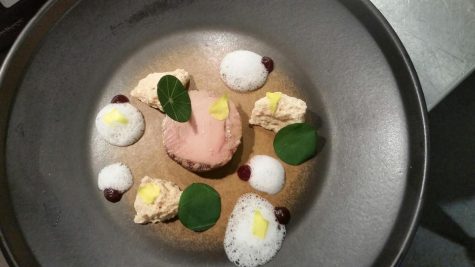 Espresso foie gras torchon, whey foam, cranberry conserva, aerated caramelized white chocolate, nasturtium leaves, and sorell petals at 1760, located in San Francisco, CA. | Photo courtesy Ben Stephens.
Espresso foie gras torchon, whey foam, cranberry conserva, aerated caramelized white chocolate, nasturtium leaves, and sorell petals at 1760, located in San Francisco, CA. | Photo courtesy Ben Stephens.
BREAKING DOWN THE ISSUES
The arguments against foie can be summed up into three issues: the health and quality of life of the ducks as their livers fatten, the use of a feeding tube when feeding the ducks and their living conditions at the farm.
The sticking point for most people concerning foie gras is the “gavage” process to produce the fattened liver. Over the course of a few weeks, the ducks are fed amounts of food that gradually increase in volume. In order to ensure that the ducks each eat the correct amount of food, farmers use a feeding tube to deliver the food down the ducks’ throat and into their stomach. This mimics a natural process that wild geese and ducks do instinctively. Unlike mammals, waterfowl have the ability to store and use fat in their liver without becoming unhealthy. Ducks and geese gorge themselves with excess food in order to store fat in their liver, which the Egyptians discovered and the Romans first replicated for year-long production of foie gras. Therefore, the fattening of a duck’s liver is not at all unnatural.
Neither the feeding tube or the fattened liver give the duck discomfort when done by a responsible farmer. Though imagining someone using a feeding tube to give a human their next meals seems like a unpleasant experience, the anatomy of a duck is quite different from that of a human. As noted by Lawrence W. Bartholf, 2005 President of the New York Veterinary Medical Association on Hudson Valley Foie Gras’ website, ducks do not have a gag reflex that would make the duck uncomfortable as the tube goes down its throat, and additionally, the windpipe of a duck is in the center of its tongue, not its throat as it is in humans. The ducks are not choked or mistreated during this process if carried out by a responsible farmer.
On the subject of living conditions, the main area of criticism is the use of cages. On this point, I can agree that battery cages, which are cramped, individual-sized cages stacked for maximum duck storage, should not be an acceptable practice. However, this does not make foie gras production bad, rather it should challenge farmers to adapt better, though possibly more costly, practices for the good of their animals. Additionally, battery cages are not unique to foie gras industry as many chicken farmers also utilize them as cheap and efficient housing.
FOIE AND FREEDOM
During my time at the Culinary Institute of America, I had the opportunity to visit Hudson Valley Foie Gras, an upstate New York farm that raises ducks for foie gras and duck meat used in kitchens across the country. Before visiting the farm, I had a few preconceived notions of how the ducks were treated by foie gras farmers, mostly collected from various animal rights groups’ fear-mongering websites. However, instead of battery cages, the ducks lived in reasonably spacious pens with a few other ducks. Instead of watching the ducks suffer, I watched the ducks run up to a worker and sit patiently as it was fed. I saw the passion for the ducks and the product they produced as we spoke with the manager, who acted as our tour guide for the day.
Foie gras is not cruel, nor is the process by which it is made an immoral, evil or despicable practice of raising waterfowl. Its production is no more detrimental to the animals than the production of any other meat. In fact, as a gourmet product expected to be of high-quality, it could be argued that foie gras ducks and geese receive better treatment than most animals factory-farmed for the inexpensive grocery store meat most people buy without a second thought. While all animals deserve to be treated well while they are raised as food, we should move towards fighting for improvements, such as cage-free environments, rather than abolishing a product altogether.
Making foie gras illegal made as much sense as a outlawing meat altogether because vegetarians disagree with the slaughter of animals for food. If a group moved to outlaw the sale of steak or bacon in a state, every omnivore’s voice would rise up in a massive outcry. It should not be any different with foie gras.



